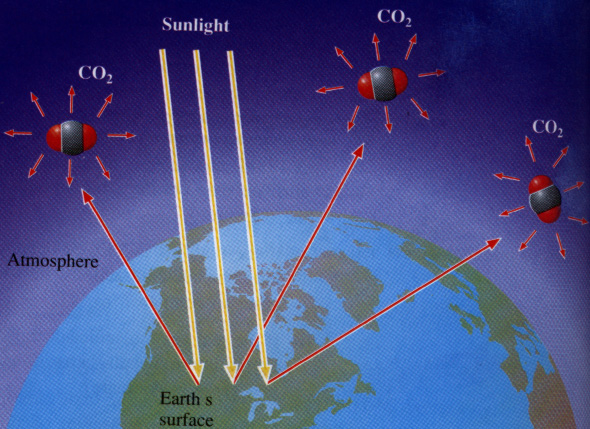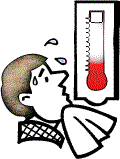



 |
 |
|
|---|---|---|
| The Earth is a trap for radiant energy from our Sun. | ||
 |
||

|
||
Clearly solar radiation strikes the earth every twenty four hour period for nearly a dozen hours on average, except at the poles where the exposure is continuous for months when the arctic or antarctic shift as the planet makes its annual circuit orbiting the sun.
 On planets without life the incoming short wave radiation is absorbed by surface features, retained for some brief time and transformed into long wave radiation. Specialists refer to long wave radiation as infrared light–what we call heat.
On planets without life the incoming short wave radiation is absorbed by surface features, retained for some brief time and transformed into long wave radiation. Specialists refer to long wave radiation as infrared light–what we call heat.
Water will absorb that radiation also, but, unlike rocks, sand, or mud, liquid water can absorb more incoming solar radiation before it changes temperature, than almost any other hard substance.
 History of heat and climate in our geological past.
History of heat and climate in our geological past.
Cloud cover will have an enormous, but as yet unsettled influence on temperatures, as understood amongst atmospheric experts. That is because the Earth's clouds are largely water vapor that condenses in the cooler upper atmosphere.
In the more humid areas of the Earth, where clouds intercept incoming radiation, the percentage of cloud cover can cool the land below during the day --but may absorb heat over the evening hours. The water vapor that condenses to form clouds cools the land below, reflects light from the top of the cloud, but the water in the vapor form does retain long wave radiation. The reflective capacity, due to their light (white) color is referred to as albedo, white objects reflect more radiation than do darker objects.
But the precise role of clouds depends on their size, shape, distribution and residence time. While clouds reflect incoming solar radiation, the water vapor they contain can also hold in warmth at the surface, sort of like a blanket. Thus, the planet Venus, for example is surrounded by clouds that trap heat at the planet's surface.
![]()
The energy that is available from solar radiation or "irradiance" is only a fraction of the amount striking the earth. But any organism such as bacteria, algae or vascular plants can utilize blue and red wavelengths of the radiant light spectrum because of their chloroplasts. Because these creatures convert radiant energy into chemical bond by a process of photosynthesis, ecologists call them producers. They form the critical part of the life sustaining system on earth; often represented by the concept of a pyramid.
How is this diagram above a representation of Aldo Leopold's "mountain" in Thinking Like a Mountain?
![]()
Technology
index ![]() landscape index
landscape index ![]() words index
words index ![]() map index
map index ![]() photograph index
photograph index